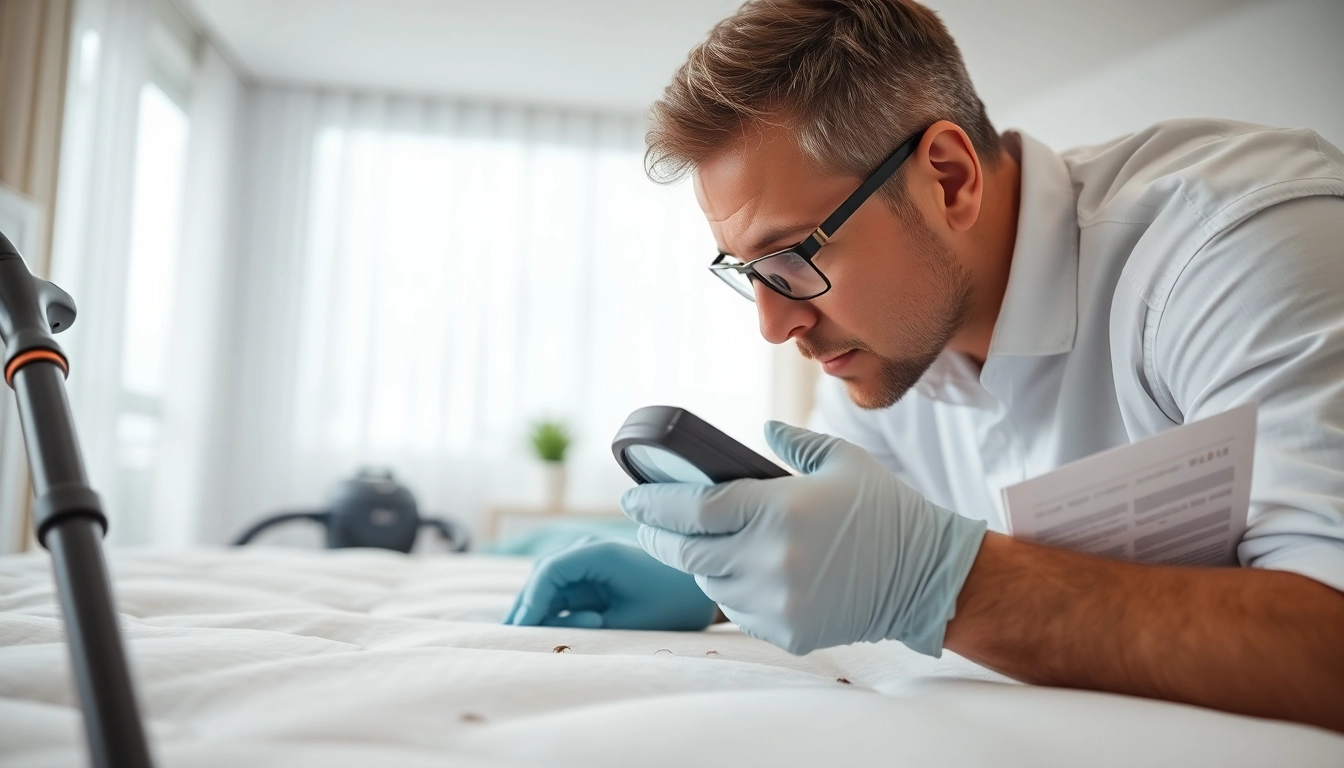Understanding Bed Bugs and Their Behavior
What Are Bed Bugs?
Bed bugs are small, wingless insects that feed on the blood of humans and animals. Scientifically known as Cimex lectularius, these pests are notorious for being elusive and resilient. Adult bed bugs typically measure about 5 to 7 millimeters in length, resembling apple seeds in both size and shape. Their bodies are flat, oval, and reddish-brown in color, which makes them difficult to detect. Despite their size, a single female bed bug can lay hundreds of eggs in her lifetime, leading to rapid infestations in homes and commercial spaces.
Life Cycle of Bed Bugs
The life cycle of bed bugs consists of several distinct stages: egg, nymph, and adult. The complete process from egg to adult can take as little as 5 weeks under optimal conditions. Each egg is about 1 millimeter long, white, and often hidden in cracks and crevices. Nymphs are smaller versions of adults and undergo multiple molts, requiring a blood meal at each stage to mature. Each stage presents unique challenges for those focusing on effective Bed bug control.
Signs of Infestation
Identifying a bed bug infestation early is crucial for effective management. Some common signs include:
- Blood Stains: Small rust-colored spots on bedding or furniture are often a result of crushed bed bugs after feeding.
- Dark Spots: These are excrement marks and indicate the presence of bed bugs in the area.
- Live Bugs: Spotting adult bed bugs or nymphs, especially in and around beds, is a clear indication of an infestation.
- Eggs and Shells: Finding tiny white eggs or shed exoskeletons can signal an existing infestation.
Prevention Techniques for Bed Bug Control
Keeping Your Home Free of Bed Bugs
Prevention is the first line of defense against bed bugs. Here are essential strategies to consider:
- Regular Cleaning: Maintain a clean home by vacuuming frequently, particularly in areas prone to bed bugs such as bedrooms and living rooms.
- Declutter: Reducing clutter allows for easier inspection and cleaning, minimizing potential hiding spots for bed bugs.
- Protective Covers: Use bed bug-proof encasements on mattresses and box springs to create a barrier between you and these pests.
Helpful Tips for Travelers
Traveling poses a significant risk of bed bug infestations. Here are strategies to minimize the chances of bringing bed bugs home:
- Inspect Your Room: Check for signs of bed bugs upon arrival at a hotel. Look for stains on bedding and inspect the seams of mattresses.
- Luggage Management: Keep luggage off the floor and away from bedding; consider using luggage racks instead.
- Washing Clothes: Upon returning home, wash all clothing in hot water to kill any potential hitchhikers.
Regular Maintenance Practices
Ongoing vigilance is key to preventing the resurgence of bed bugs. Here are maintenance practices to consider:
- Routine Inspections: Conduct regular inspections of your home for early signs of bed bugs, particularly in high-risk areas.
- Educate Household Members: Ensure that everyone in the household understands how to identify bed bugs and the importance of reporting any signs of them.
- Seek Professional Advice: If you’re unsure about your pest control measures, consulting a licensed professional can provide valuable insights.
DIY Bed Bug Control Methods
Common DIY Treatments
When facing a bed bug infestation, some homeowners may consider do-it-yourself treatments. Some effective DIY methods include:
- Heat Treatment: Exposing bed bugs to high temperatures (over 120°F) can effectively eliminate them. Items can be washed in hot water and dried on high heat.
- Diatomaceous Earth: This natural substance can be applied in affected areas; it works by dehydrating bed bugs upon contact.
- Steam Cleaning: Using a steam cleaner on mattresses, carpets, and furniture can kill bed bugs and their eggs on contact.
Best Practices for Effective Application
Applying DIY methods effectively requires careful attention to detail:
- Targeted Treatment: Focus on areas known for bed bug activity, such as seams of mattresses and bed frames.
- Consistency: Repeat treatments as needed; bed bugs may take time to eradicate completely.
- Monitor Results: After treatment, continue checking for signs of bed bugs to ensure that the infestation has been eliminated.
When to Seek Professional Help
While DIY methods can be effective, there are instances where professional assistance is essential:
- Severe Infestations: If you observe signs of a significant infestation, professional extermination methods may be necessary.
- Ongoing Issues: If DIY methods fail to yield results, seeking expert help is crucial for long-term control.
- Health Concerns: Individuals with allergies or respiratory issues may benefit from professional treatment to minimize exposure to treatments.
Professional Approaches to Bed Bug Control
Understanding Professional Treatments
Professionals offer a range of treatments tailored to effectively manage bed bug problems:
- Chemical Treatments: Involves applying EPA-registered insecticides specifically designed for bed bug control.
- Heat Treatments: Professionals can utilize heating equipment to raise the temperature of entire rooms, effectively killing bed bugs in all life stages.
- Integrated Pest Management: Combines multiple strategies, including inspection, treatment, and prevention, to deal with bed bugs holistically.
Comparing Different Treatment Options
When choosing a treatment option, it is essential to consider several factors:
- Effectiveness: Evaluate which methods provide the best results for addressing your specific infestation.
- Safety: Ensure that the chemicals and methods used are safe for humans and pets.
- Cost: Compare the costs of different treatment options and find a solution that fits your budget while effectively managing the problem.
Choosing the Right Exterminator
Selecting an exterminator requires careful consideration:
- Experience: Look for professionals who specialize in bed bug control with a strong track record of success.
- Credentials: Ensure the exterminator is licensed and insured; this indicates professionalism and adherence to industry standards.
- Customer Reviews: Research feedback from previous clients to gauge the quality of service and reliability of the exterminator.
Aftercare and Monitoring for Bed Bug Control
How to Monitor for Reinfestation
Monitoring for bed bugs after treatment is vital to avoid reinfestation:
- Regular Inspections: Continue monthly checks for signs of bed bugs, particularly in sleeping areas.
- Bed Bug Monitors: Consider using interceptors or mattress encasements that allow monitoring of bed bug activity discreetly.
- Record Keeping: Keep a log of inspections and any signs of bed bugs to track patterns and intervene promptly.
Best Practices Post-Treatment
After a professional treatment, maintain best practices to secure a bed bug-free environment:
- Limit Travel: Avoid unnecessarily transporting items between locations that may reintroduce bed bugs.
- Continue Cleaning: Maintain cleanliness and reduce clutter to minimize potential hiding spots for bed bugs.
Long-Term Strategies for Prevention
Establishing long-term strategies will ensure continued success in preventing bed bugs:
- Community Awareness: Educate neighbors and community members on bed bug identification and prevention strategies.
- Professional Inspections: Consider regular inspections from pest control professionals as a preventive measure.
- Comprehensive Education: Stay informed about bed bug behavior and new control methods to ensure preparedness against potential infestations.


